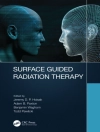APPLIED WATER SCIENCE VOLUME 2
The second volume in a new two-volume set on applied water science, this book provides understanding, occurrence, identification, toxic effects and control of water pollutants in an aquatic environment using green chemistry protocols. The high rate of industrialization around the world has led to an increase in the rate of anthropogenic activities which involve the release of different types of contaminants into the aquatic environment. This generates high environmental risks, which could affect health and socio-economic activities if not treated properly. There is no doubt that the rapid progress in improving water quality and management has been motivated by the latest developments in green chemistry. Over the past decade, sources of water pollutants and the conventional methods used for the treatment of industrial wastewater treatment have flourished.
Water quality and its adequate availability have been a matter of concern worldwide particularly in developing countries. According to a World Health Organization (WHO) report, more than 80% of diseases are due to the consumption of contaminated water. Heavy metals are highly toxic and are a potential threat to water, soil, and air. Their consumption in higher concentrations gives hazardous outcomes. Water quality is usually measured in terms of chemical, physical, biological, and radiological standards. The discharge of effluent by industries contains heavy metals, hazardous chemicals, and a high amount of organic and inorganic impurities that can contaminate the water environment, and hence, human health. Therefore, it is our primary responsibility to maintain the water quality in our respective countries.
This book provides understanding, occurrence, identification, toxic effects and control of water pollutants in an aquatic environment using green chemistry protocols. It focuses on water remediation properties and processes including industry-scale water remediation technologies. This book covers recent literature on remediation technologies in preventing water contamination and its treatment. Chapters in this book discuss remediation of emerging pollutants using nanomaterials, polymers, advanced oxidation processes, membranes, and microalgae bioremediation, etc. It also includes photochemical, electrochemical, piezoacoustic, and ultrasound techniques. It is a unique reference guide for graduate students, faculties, researchers and industrialists working in the area of water science, environmental science, analytical chemistry, and chemical engineering.
This outstanding new volume:
* Provides an in-depth overview of remediation technologies in water science
* Is written by leading experts in the field
* Contains excellent, well-drafted chapters for beginners, graduate students, veteran engineers, and other experts alike
* Discusses current challenges and future perspectives in the field
Audience: This book is an invaluable guide to engineers, students, professors, scientists and R&D industrial specialists working in the fields of environmental science, geoscience, water science, physics and chemistry.
عن المؤلف
Inamuddin, Ph D, is an assistant professor in the Department of Applied Chemistry, Zakir Husain College of Engineering and Technology, Faculty of Engineering and Technology, Aligarh Muslim University, Aligarh, India. He has extensive research experience in analytical chemistry, materials chemistry, electrochemistry, renewable energy, and environmental science. He has worked on different research projects funded by various government agencies and universities and is the recipient of multiple awards, including the Fast Track Young Scientist Award and the Young Researcher of the Year Award for 2020, from Aligarh Muslim University. He has published almost 200 research articles in various international scientific journals, 18 book chapters, and 120 edited books with multiple well-known publishers.
Mohd Imran Ahamed, Ph D, is a research associate in the Department of Chemistry, Aligarh Muslim University, Aligarh, India. He has published several research and review articles in various international scientific journals and has co-edited multiple books. His research work includes ion-exchange chromatography, wastewater treatment, and analysis, bending actuator and electrospinning.
Rajender Boddula, Ph D, is currently working for the Chinese Academy of Sciences President’s International Fellowship Initiative (CAS-PIFI) at the National Center for Nanoscience and Technology (NCNST, Beijing). His academic honors include multiple fellowships and scholarships, and he has published many scientific articles in international peer-reviewed journals. He also serves as an editorial board member and a referee for several reputed international peer-reviewed journals. He has published edited books with numerous publishers and has authored over 20 book chapters.
Tauseef Ahmad Rangreez, Ph D, is a postdoctoral fellow at the National Institute of Technology, Srinagar, India. He completed his Ph D in applied chemistry from Aligarh Muslim University, Aligarh, India, and worked as a project fellow under the University Grant Commission, India. He has published several research articles and co-edited books. His research interests include ion-exchange chromatography, development of nanocomposite sensors for heavy metals and biosensors.












